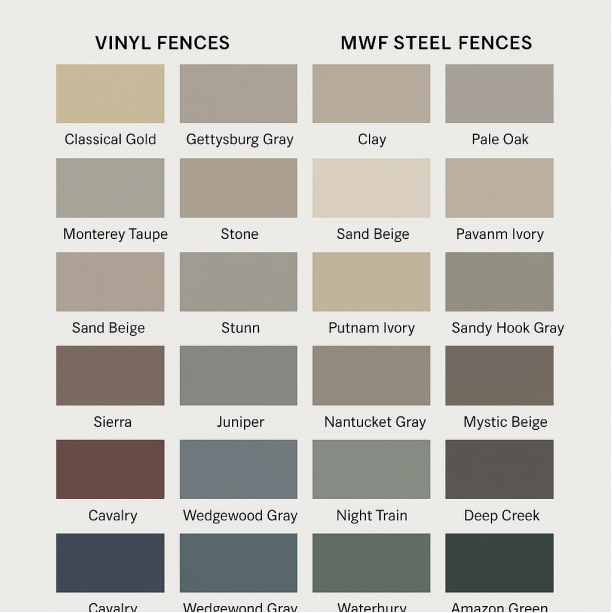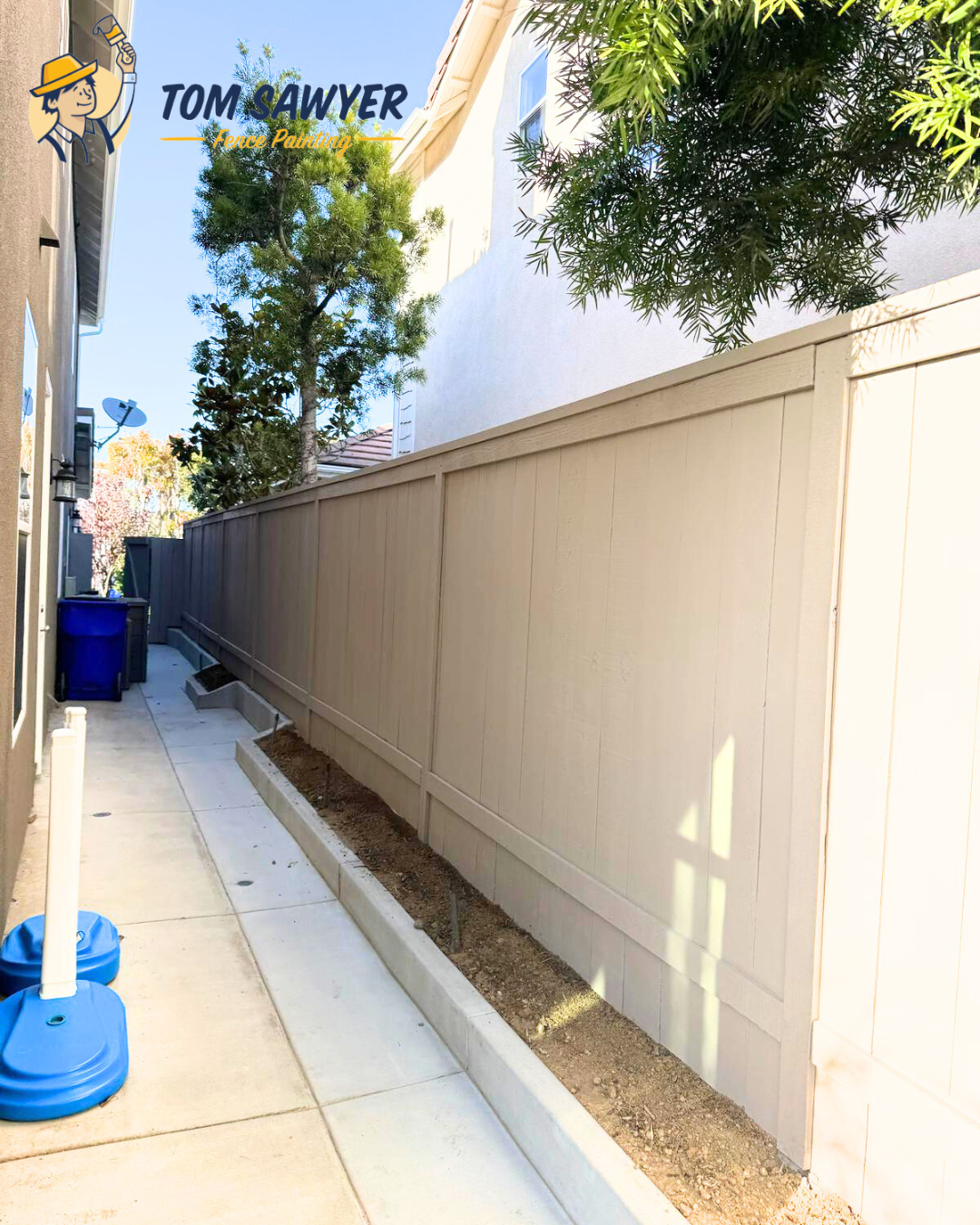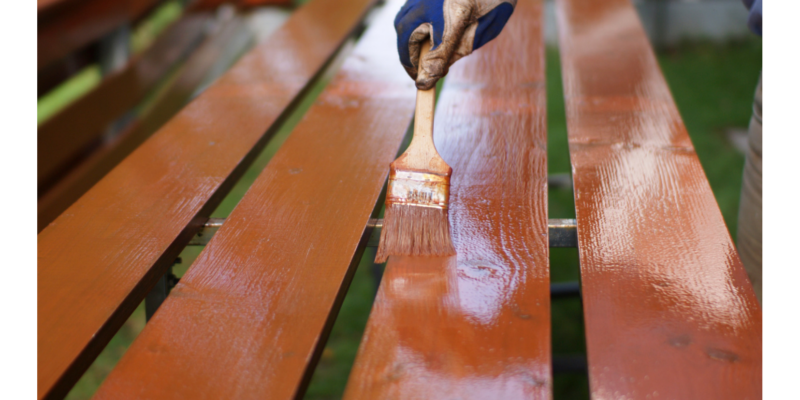Fences define the look of a property, but over time even durable vinyl fences and MWF steel
fences can fade, discolor, or lose their original appeal. Replacing them is costly and disruptive.
A professional painting solution from Tom Sawyer Fence Painting restores beauty, protects the
surface, and extends fence life at a fraction of replacement cost.
We use Benjamin Moore Command Vinyl Safe Colors, a high-performance paint designed for
both vinyl and steel fencing to withstand Southern California sun, wind, and moisture while
meeting HOA and community standards.
Fence Types We Paint
New Vinyl Fences
- Timing: Wait 1 month after installation or lightly clean to remove factory release agents before painting.
- Prep: Light surface cleaning and scuffing for adhesion. No pressure washing needed for new fences.
- Paint: Two thin coats of Benjamin Moore Command Vinyl Safe Colors to prevent warping and ensure color durability.
Older Vinyl Fences
- Prep: Power washing removes dirt, mildew, and chalking.
- Primer: Bonding primer used on heavily weathered or faded surfaces.
- Finish: Two professional spray coats deliver a smooth, long-lasting result.
MWF Steel Fences
- Prep: Remove rust, sand glossy spots, and clean thoroughly.
- Primer: Rust-inhibitive metal primer for corrosion protection.
- Paint: Two coats of Command Vinyl Safe Colors for UV stability, fade resistance, and long-term adhesion.
Why Use Benjamin Moore Command Vinyl Safe Colors
- Heat & UV Protection: Prevents color fading and material damage in hot climates.
- Flexible & Durable: Withstands temperature swings without cracking or peeling.
- HOA-Approved Colors: Wide range of vinyl-safe colors for uniform, compliant community appearance.
- Long-Lasting: Painted fences can look new for 10+ years with proper maintenance.
Benefits of Painting vs. Replacement
- Cost Savings: Painting costs a fraction of full fence replacement.
- Customization: Match HOA color standards or personalize your home’s exterior.
- Fast Turnaround: Most projects completed in just days.
- Sustainability: Keeps existing materials out of landfills.
Maintenance Tips for Painted Fences
- Annual Rinse: Keep dirt and mildew off the surface.
- Touch-Ups: Repair scratches or chips promptly to protect the finish.
- Routine Inspections: Check high-wear areas yearly for maintenance needs.
Service Areas
We provide vinyl fence painting and steel fence painting services across San Diego County,
including:
- Carlsbad
- Oceanside
- Encinitas
- La Costa
- San Elijo Hills
- Rancho Bernardo
Perfect for HOAs, property managers, and homeowners who want a cost-effective,
professional fence restoration solution.
Free Fence Painting Estimates in San Diego
Whether you have a brand-new vinyl fence needing custom colors or older MWF steel
fencing ready for a full refresh, Tom Sawyer Fence Painting delivers professional results with
Benjamin Moore Command Vinyl Safe Colors for long-term durability.
Contact Us Today for a free estimate, color consultation, and HOA-approved painting
solutions.
Here is the combined visual color chart for Vinyl Fences and MWF Steel Fences using
Benjamin Moore Command Vinyl Safe Colors.

Fence Painting San Diego | Frequently Asked Questions
- Can you paint both vinyl and steel fences in San Diego?
Yes. We specialize in vinyl fence painting and MWF steel fence painting using Benjamin
Moore Command Vinyl Safe Colors for durable, UV-resistant finishes approved by many
HOAs.
- How long does fence painting last?
With proper prep and professional application, painted vinyl and steel fences last 10+ years
before needing a refresh. - Do you paint new fences or just older ones?
Both. New vinyl fences need light cleaning and scuffing before painting. Older fences may
require power washing, priming, and rust removal for steel. - What colors are available for fence painting? We use Benjamin Moore Command Vinyl Safe Colors, designed to prevent fading, cracking, or warping in sunny climates like San Diego.
- Is fence painting cheaper than replacement?
Yes. Painting costs a fraction of full fence replacement and delivers a fresh, uniform look for
HOAs and homeowners. - Do you handle HOA approval for fence colors? Yes. We work with HOAs in San Diego to ensure color selections meet community standards before painting begins.
- How long does the painting process take?
Most vinyl or MWF steel fence painting projects are completed in 2–4 days depending on
fence size and prep requirements. - Will painting protect steel fences from rust?
Yes. We apply a rust-inhibitive primer before painting to stop existing rust and prevent new
corrosion. - Do darker colors cause vinyl fences to warp?
That’s why we use Vinyl Safe Colors—they are specially formulated to reflect heat and prevent
warping or damage from high temperatures. - What areas in San Diego do you serve?
We serve Carlsbad, Oceanside, Encinitas, La Costa, San Elijo Hills, Rancho Bernardo, and
all of San Diego County.
Free Fence Painting Estimates in San Diego
Tom Sawyer Fence Painting provides HOA-approved, cost-effective painting services for both
vinyl and MWF steel fences using Benjamin Moore Command Vinyl Safe Colors for
long-lasting beauty and protection.
Contact Us Today for a free estimate and color consultation.




